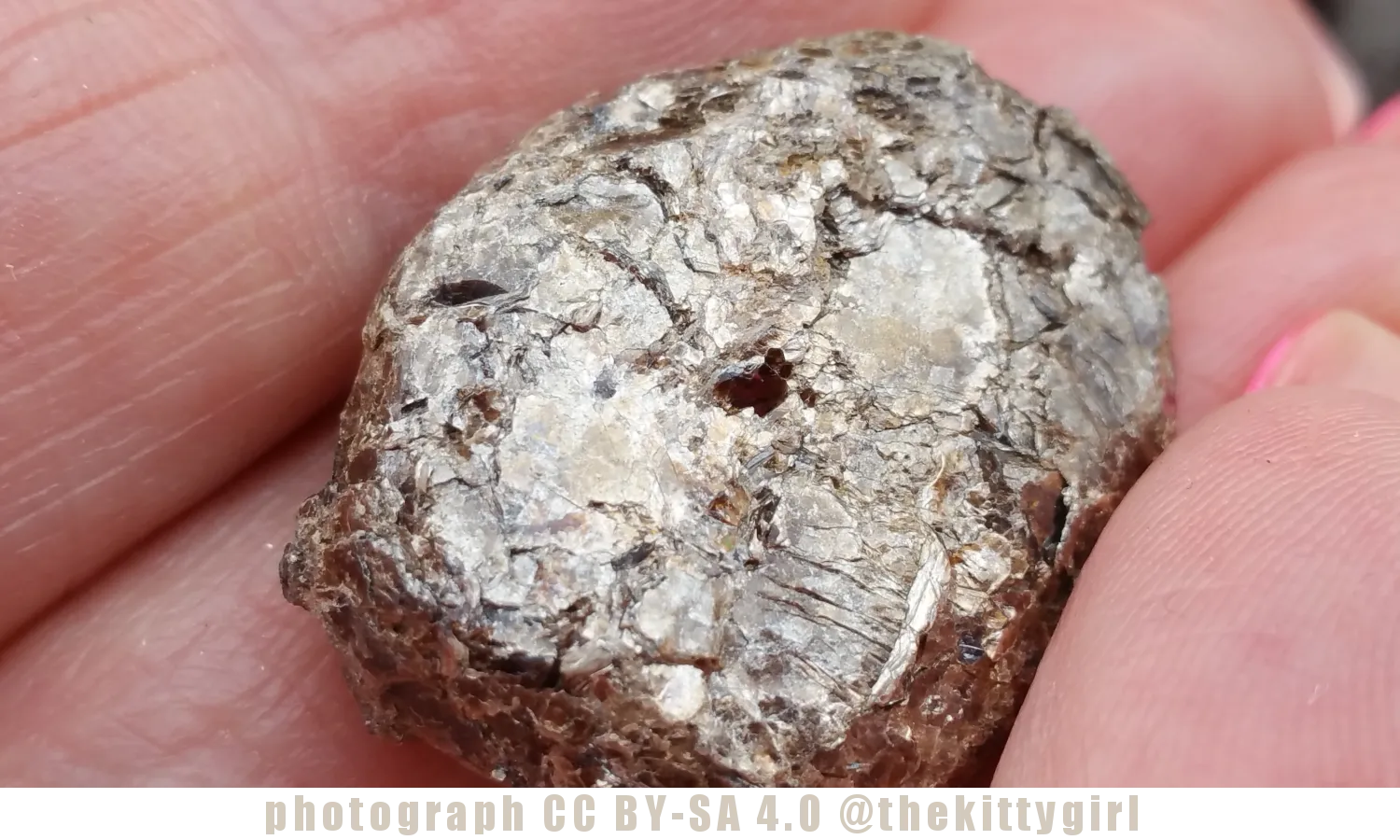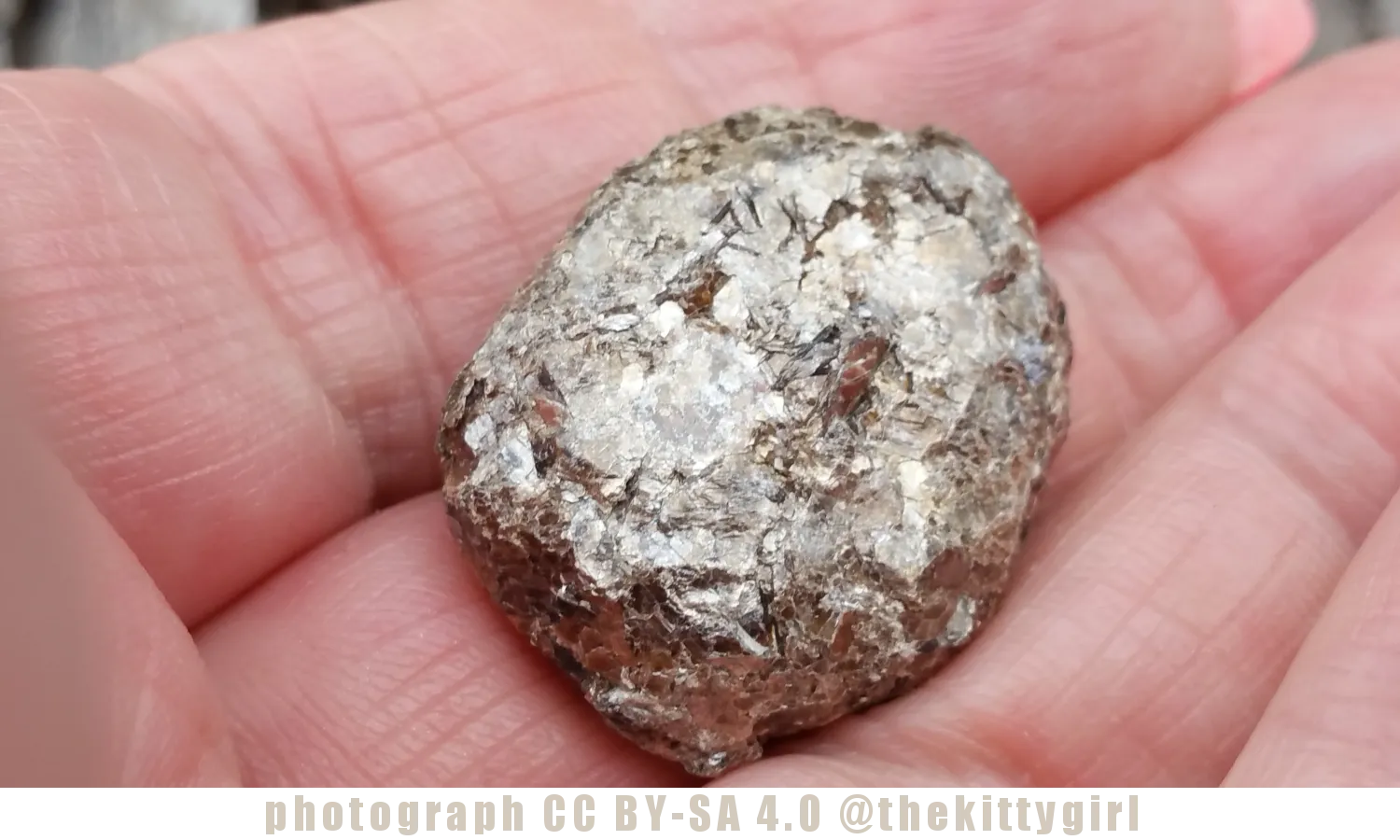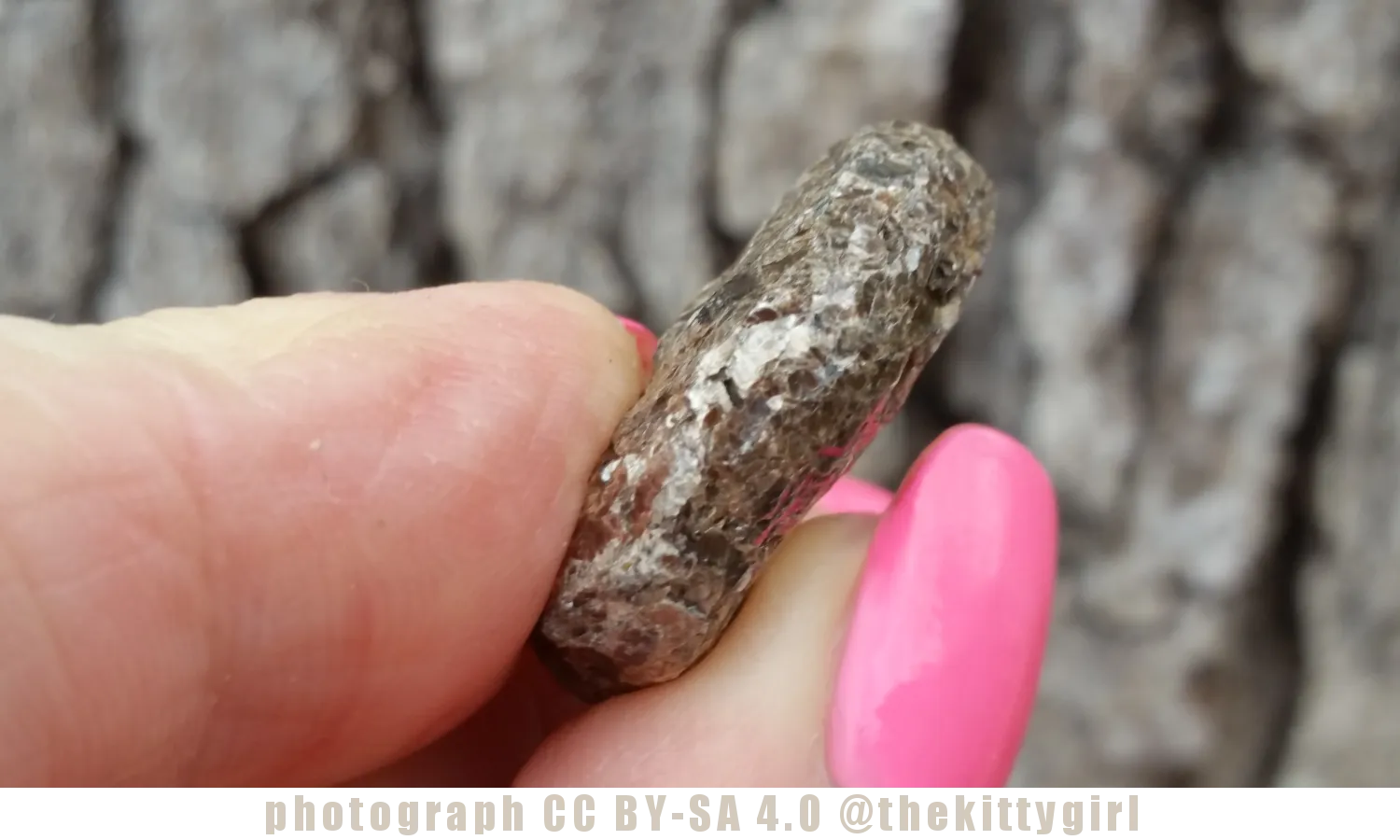This post is the third, and last, in my series on mica which follows my presentations of Lepidolite (purchased from a shop) and Muscovite (collected from my back yard). This third mica from my collection is called Phlogopite. There are other types of mica, but these three are the only ones I have.
This sample was purchased on eBay many years ago. According to the information supplied by the seller, this piece originated in the Czech Republic. As with my lepidolite sample, I've had this specimen so long I can't remember what I paid for it.

I thought this was a lovely piece, with its silvery color and the shiny spots in it that are visible under the right lighting. To be honest, I was attracted to this piece because of that, and the fact that it is so very different in appearance from the mica that was in our back yard when I was a child.
It wasn't until later that I learned that phlogopite typically ranges in color from yellow to reddish-brown to brown. Depending on the trace amounts of other elements present, it can also be green, white, or gray (as my sample is). So, this is actually a rather unusual piece and I was fortunate to get it.
I rather like unusual pieces in my collection, such as this one. Some collectors, however, prefer having specimens that typify the usual characteristics of a class of minerals, but I rather think that uniqueness adds an interesting dimension to collecting. Coin collectors often thrive on such rarities in the numismatics trade, such as the $500 which can be commanded for a Three-Legged Buffalo Nickel, where the four-legged buffalo is sadly missing one of his legs on the five-cent coin.

Phlogopite is often added to products and coatings to add strength, stiffness, heat-resistance, and/or protection from ultraviolet rays. Sheets of phlogopite make excellent base material for electrical circuit boards because of their stiffness, heat-resistance, electrical insulation properties, and machinability. It is also sometimes used in the manufacture of spark plugs and fuses, as well as added to glass to make it stronger and more heat-resistant.
Much phlogopite is used in plastic composite body parts for automobiles. Phlogopite increases the stiffness of the plastic, provides greater dimensional stability, and reduces distortion upon temperature change. [2]

It is amazing to me how many different mineral varieties there are, as well as further variations in one mineral species such as mica. It is also remarkable to me how humans have analyzed all these materials and discovered how to use them to good advantage! Mother Nature and science make a good team!
SOURCES 1 911metallurgist.com: Mica Mineral Types 2 Geology.com: Phlogopite 3 Mindat.org: Phlogopite 4 Minerals.net: Phlogopite 5 Wikipedia.org: Phlogopite

Lepidolite • Muscovite • Dichroic Glass
Goldstone • Aventurine • Amber • Black Star of India
Ruby – Part 1: Crystals • Ruby – Part 2: Jewelry • Larimar
Citrine Crystal • Amethyst Crystal • Kitty Geode • Phoenix Crystal
Barbeque
& Amethysts • Salt Lamps • Trilobite • Arrowhead
Garden Quartz, freeform • Granite Quarry № 2 • Apophyllite
Rocks from Space! • Quartz Rock: Raw versus Polished
Chrysocolla • Tourmaline • Bornite • Goethite • Small Quartz Crystal
Smoky Quartz • Tibetan Quartz • Amazonite Beads • Zoisite
Rutilated Quartz • Garnet • Amazonite Sphere • Lapis Lazuli Mala
Amethyst Point • How Rocks Get Their Color • Red Jasper
Ring, Ring! Amethyst Calling! • Lapis Lazuli • Turitella Agate




to learn more about either of these projects, please visit: @heyhaveyamet or @theterminal
07-Jun-2020
Return from Phlogopite to 𝕜𝕚𝕥𝕥𝕪's Web3 Blog

